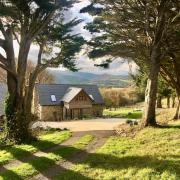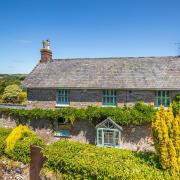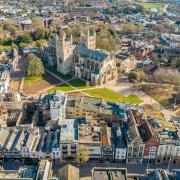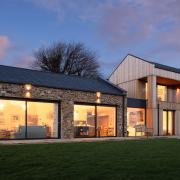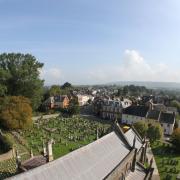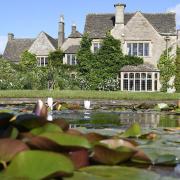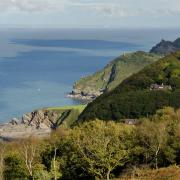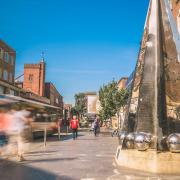If anything can make one proud to be living in this part of glorious Devon, it's a long and leisurely look around the galleries at the Museum of Barnstaple, writes Jilly Parton. Photos by Neville Stanikk
Standing on the banks of the River Taw, looking out towards the medieval Long Bridge, the Museum of Barnstaple is a striking red-brick building and home to thousands of artefacts which tell the story of North Devon in rich detail. Built in 1872 as a private house for William Thorne, twice the town’s mayor, he died before taking up residence. Fifteen years later it was bought by one of Barnstaple’s greatest benefactors, William Rock, who turned it into an ‘Athenaeum’ – a centre of learning for local people.
Ruth Spiers has been Collections Officer for a decade and she is my guide. There is an intimacy to the museum; its jumbled rooms and corridors are small, and the displays packed tightly together, but this somehow reinforces the notion that our ancestors have been very busy down the ages and our landscape has long been evolving
In the geology gallery, a full-sized model of an elephant greets you. It is astonishing to discover that his pre-Ice Age remains were discovered under three feet of clay just a few streets away from the Museum. Only a few fossilised fragments are on display but they grip the imagination.
The lives of our earliest settlers are examined in numerous pots and tools. “We have two important prehistoric pots in our collection,” Ruth says. “They were found near Bratton Fleming so there was clearly a lot of activity going on in settlements along the edges of Exmoor.”
In fact, the museum tells the story of seven centuries of pottery; in the next gallery excavated remains of a 16th-century firing kiln have been re-built to size. “The remains were found on the banks of the River Yeo. In those days potters always built kilns next to water because they were terrified of flying sparks burning down their houses!”
Pottery made in the ‘North Devon Tradition’ is known as sgrafitto ware, a technique of scratching decorative patterns through the slip of white clay to reveal the red clay beneath. Ruth points out some earliest examples: “When they started out, the glaze they used was yellow because of lead impurities in the recipe. It was banned eventually. But potters like Harry Juniper in Bideford are still making sgrafitto ware right now. We have many harvest jugs in our collection and the oldest ones are worth many thousands of pounds.”
There are examples of Art Ware by Brannam too. “Brannam pottery began producing at its factory in Barnstaple in 1879 and was prolific for many decades. ‘Brannam Blue’ was sold to Liberty’s in London, and they even supplied flower pots to the Queen at Windsor.”
Another of the town’s great manufacturers was Shapland and Petter, which made decorative furniture for the rich and aspiring middle classes from its factory just over the bridge from the Museum. A selection is on show including a beautifully crafted and inlaid display case.
Many of the Museum’s treasures are hidden in attic storage rooms, some too fragile to display. We head for these now, up small wooden stairs that lead to a maze of what would have been servants’ quarters when the Museum was originally built. Scores of rocks, minerals and fossils are carefully preserved in slim, wooden drawers. Ruth picks out a piece of wavellite, another of North Devon’s claims to fame. “It’s a mineral that was first discovered at Filleigh near West Buckland in the 1760s,” Ruth explains. “It has no commercial use yet but who knows. It’s exciting that we were the first in the world to find it!”
In another room something catches my eye on a dusty shelf: it is a Chilean Pink Toed Spider in a glass frame. I kid you not. The Museum has an incredible collection of national and international insects, moths and butterflies, a few of which are on display downstairs. Rooting around in the attic, however, there are some extraordinary finds. A tray of wasps from Bratton Fleming takes my breath away. They are each lovingly labelled by hand and I find this strangely moving.
Another thrill is seeing an original pannier basket in wonderful condition. “We even have an old photograph of it actually at the Barnstaple market,” says Ruth. The walls are covered in old pictures hung haphazardly. A notable squire here, a forgotten farmer there. Ruth calls this the ‘Community Attic’, and it is just that – crammed with items that whisper of the geological, agricultural, social and industrial history of North Devon over centuries long gone. It is a treasure-house and we are very lucky indeed to have it.



